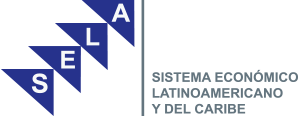ECLAC: STRONG CURRENCIES, WEAKER EXPORTS THREATEN LATIN AMERICA
21 mayo 2013
Fuente: Published by Reuters, via Google News
Fuente: Published by Reuters, via Google News
Santiago, May 21 (Reuters)- Currency strength due to stimulus measures in the developed world is currently Latin America's Achilles' heel, though the region's macroeconomic management is a bright spot, the head of the United Nations' body for the region told Reuters.
Monetary easing in Europe, the United States and Japan has led investors to hunt for better returns in the emerging world, strengthening Latin America's currencies and damaging the competitiveness of its crucial exports.
"I think the factor that most worries Latin America is the strength of its currencies," Alicia Barcena, the Economic Commission for Latin America and the Caribbean's (ECLAC) executive secretary, said at the Reuters Latin America Investment Summit.
"This monetary easing conspires against the dynamism of our export sector," she said in an interview in Santiago.
Latin America, a top producer of oil, soy, copper and other commodities, should brace itself for more moderate exports, a fall in demand from crisis-hit Europe and a slowdown of Chinese consumption.
"We're very worried about exports. Last year they fell significantly," Barcena said. "I think we have to prepare ourselves for more moderate trade, especially given the fall of aggregate demand from Europe and the United States and the deliberate slowdown in China”.
The region's food-exporting countries, whose main market is the European Union, are seen being impacted by the decline in food prices and subdued euro zone growth this year, ECLAC has said.
But Barcena said avid raw materials consumer China will maintain a certain level of dynamism and commodities prices should remain relatively high, albeit volatile.
Deepening trade within Latin America is one way to protect the region, she added.
A recovery in regional powerhouse Brazil and solid expansion in Mexico should lead Latin America and the Caribbean's economy to grow to 3.5 percent this year, Barcena reiterated. That would mark a pick up from 3.0 percent growth in 2012, though the region expanded 4.3 percent in 2011 and 5.9 percent in 2010.
Inflation, a historic foe in the region, is now mostly under control and the labor market is stable, Barcena said. And while the current accounts deficit is manageable, she added the region shouldn't let its guard down.
Managing the capital inflows
The region should weigh the timing and measures to manage these massive capital inflows, Barcena said.
Latin American governments have tackled these inflows in a variety of ways. Brazil has applied strict controls on foreign capital inflows and its central bank has intervened in the local exchange market to tame the real, while Andean nations such as Colombia and Peru have opted for periodic currency-buying measures with mixed results.
"Every day the importance of evaluating instruments to administer capital inflows grows. Many countries are weighing how they can disincentivize capital inflows via reserves, taxes, because this rate differential is a very worrisome subject," the head of Chile-based ECLAC added.
The region's relatively high interest rates -7.50 percent in Brazil, 4.00 percent in Mexico and 3.25 percent in Colombia- as well as brisk growth have helped attract investment.
"We've never had a monetary easing this intense and for this long (in developed economies), so this means the region has to prepare itself in a different way," Barcena said.
Recent monetary easing in Japan will likely lead to more investment in Latin America, according to Barcena.
Accumulating reserves is one way to help moderate the impact of these inflows, she added. Market operations, such as bond issues, can then help stem excessive liquidity.
Another option is controlling capital inflows via taxes or sovereign wealth funds. Chile, for instance, has created a sovereign fund abroad to save some income from its copper-fueled bonanza.








